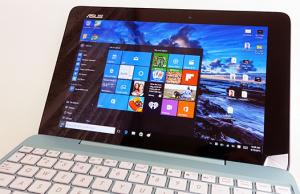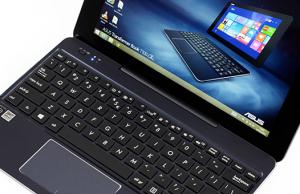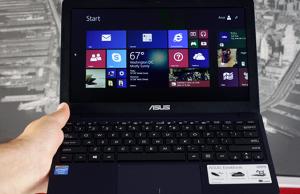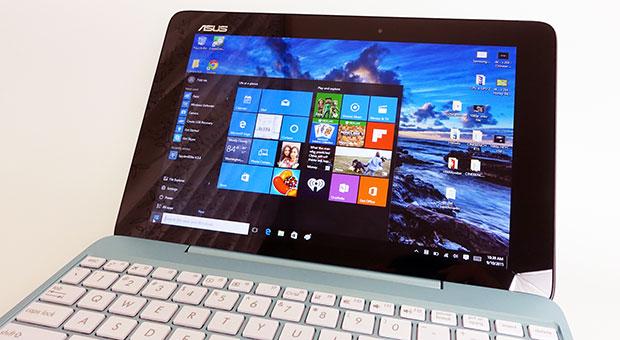I’ve spent the last couple of days playing with the Asus EEE Pad Transformer. You probably know I got to preview this unit a while ago, now I finally managed to get it for more than a couple of hours and was able to get used to it and find most of its strong and poor aspects.
I also compared it with the iPad 2, the most popular tablet of the moment, and you can see the results in this other post here on the site.
In the article below you’re going to read what I found out about the EEE Pad Transformer during these days. If not in the mood to read everything then (SPOILER ALERT), you should know that the Asus tablet is impressive in terms of hardware and build quality, but still has problems with the software (Android 3.0 HoneyComb) . Problems that could easily make a potential buyer look the other way, probably in Apple’s backyard.
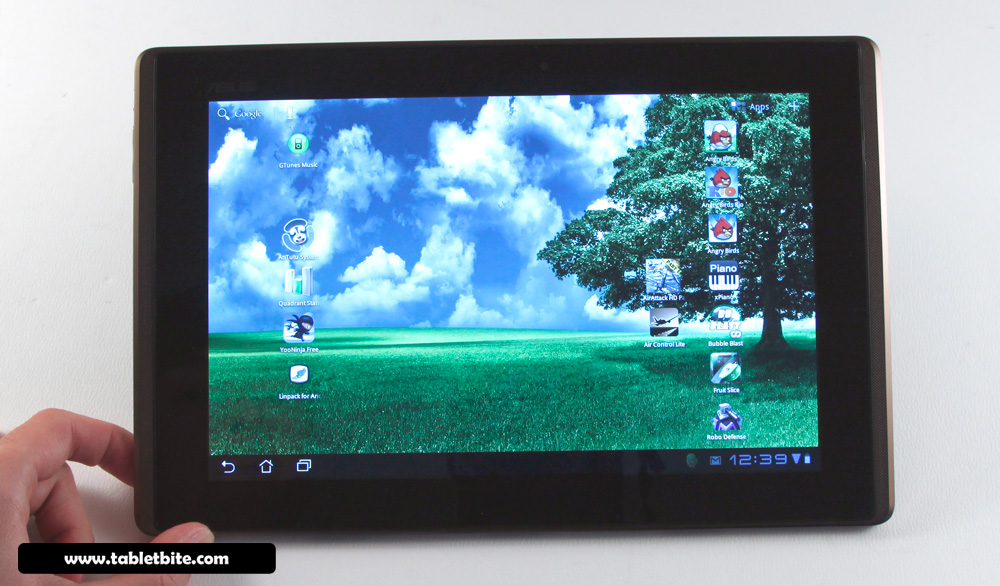
Asus EEE Pad Transformer – solid built Android tablet, with software hiccups
See the review below for the complete story.
The specs
But first, a quick look at the specs:
- 10.1 inch glossy display, IPS panel, 16:10 aspect ratio, 1280 x 800 px resolution, covered with Gorilla glass, 10 finger multi-touch
- Nvidia Tegra 2 processor clocked at 1.0 GHz
- 1 GB of memory
- 16 or 32 GB storage space
- Wireless N, Bluetooth 2.1 + EDR, A-GPS, 3G (future version)
- microSD card slot, micro HDMI 1.3a slot, headphone jack,
- accelerometer, proximity sensor, g-sensor, light-sensor, gyroscope
- 5 MPx camera in the back, 1.3 MPx camera on the front
- Li-Ion 24.2Wh rated at 9.5 hours
- docking station with extended battery, 2xUSB 2.0 slots, standard HDMI slot
- Android 3.0 HoneyComb OS with access to Android Market
- weighs 1.49 lbs (680 g)
- measures 10.6 x 6.9 x 0.51 inches (271 x 176 x 12.9 mm)
So pretty much all the best features you can get on a tablet these days. Powerful hardware and high resolution IPS panel really manage to impress.
Design and construction
You’ll notice from starters that the Transformer is a wide tablet. First, it comes with a 10.1 inch display with 16:10 aspect ratio . But there’s also a bezel around the screen that measures around 18 mm and some extra metallic panels on the sides of it, making it even wider than you would expect.
However, this is not at all a problem, as these oversized sides and the very nice rubbery finish on the back allow perfect grip on this tablet. It’s in fact more comfortable to use for a long time than all the other tablets I’ve tried (probably not more comfortable than the PlayBook, but that one competes in another class of smaller tablets).
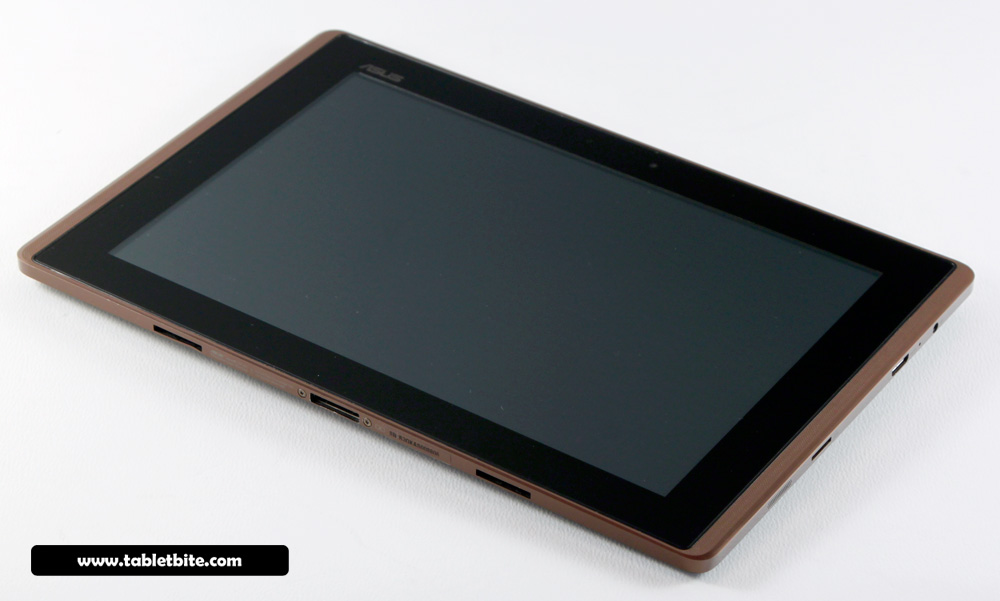
Big display on the front face
The device ain’t as thin as the iPad but it ain’t thick either. Measures just around 13 mm in thickness which is pretty nice. Margins are covered in high quality metal and the back comes with a plastic brown finish, but a smooth rubbery one. This makes it scratch and smudges resistant but I’m pretty sure that particular texture on the back will easily catch dust and dirt in time.
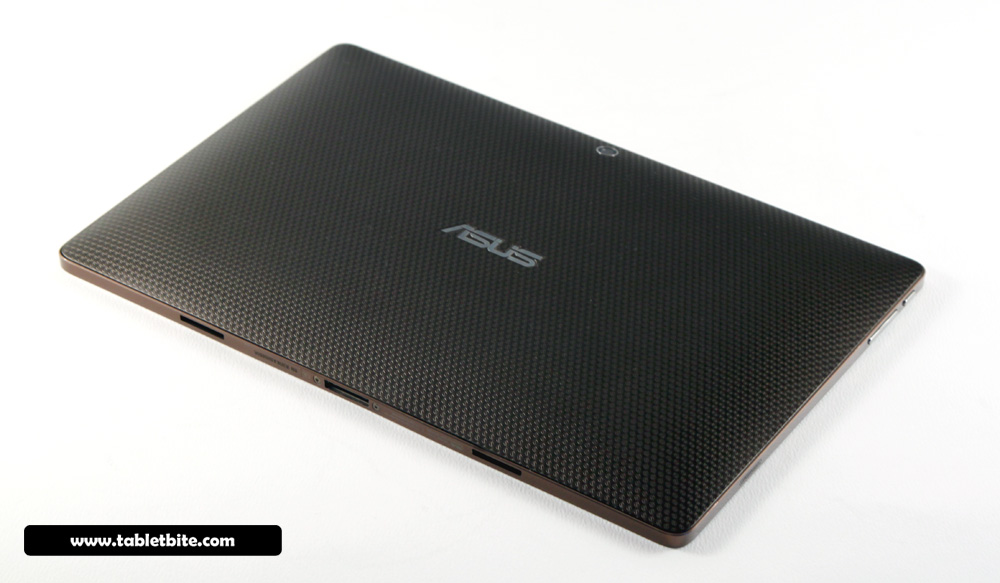
Textured plastic finish on the back
Should also tell you a couple things about the ports on this one: you get a microSD card-reader, micro HDMI port, proprietary port on the bottom for charging and connecting the device to the docking unit or a computer, two speakers on both sides and a headset jack. Plus the volume rocker and the On/Off/Screen-lock button placed ergonomically in the upper left side of the tablet.
The clip below will tell you more about the exterior of the Asus EEE Pad Transformer.
Docking station
As you probably already know, the Transformer comes with a matching docking station that only sells for around 100-150 bucks and adds a bunch of features to the actual tablet.
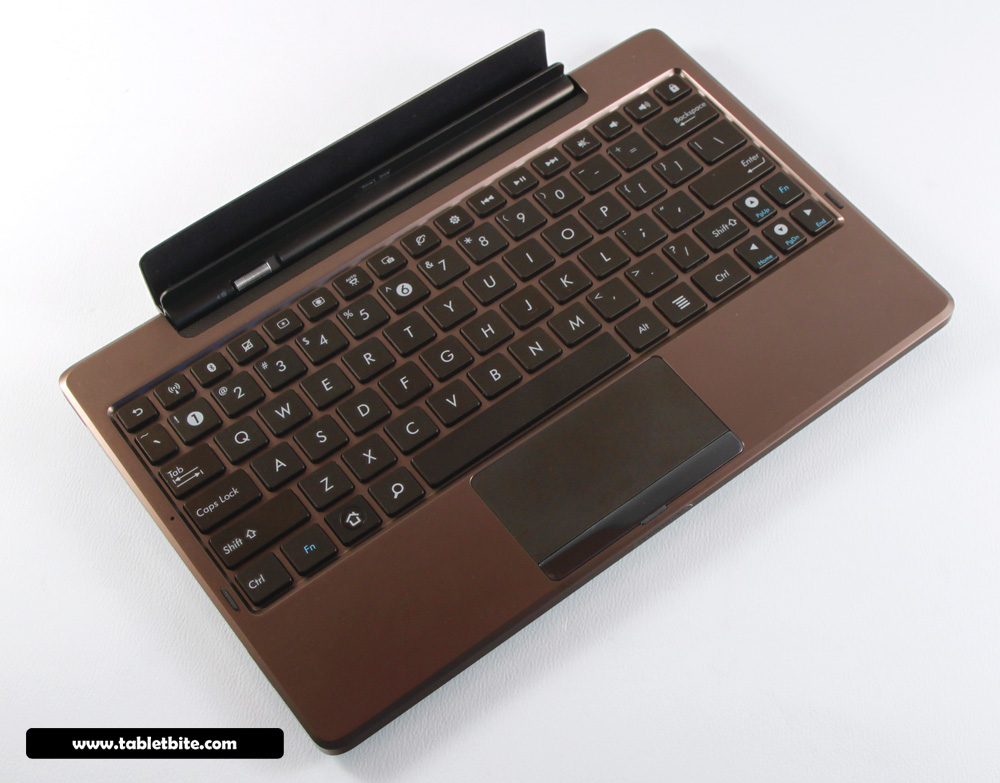
Docking Station
First, it comes with an extended battery which, when the tablet is connected to the dock, will actually charge the battery inside the tablet. Together, slate + docking will get you to 16 hours of life based on Asus’s claims. More like 10-11 hours in our real life usage tests.
Then, the Docking also comes with two USB 2.0 slots and an SD card-reader, besides the proprietary connector used to charge the docking (and tablet if connected).
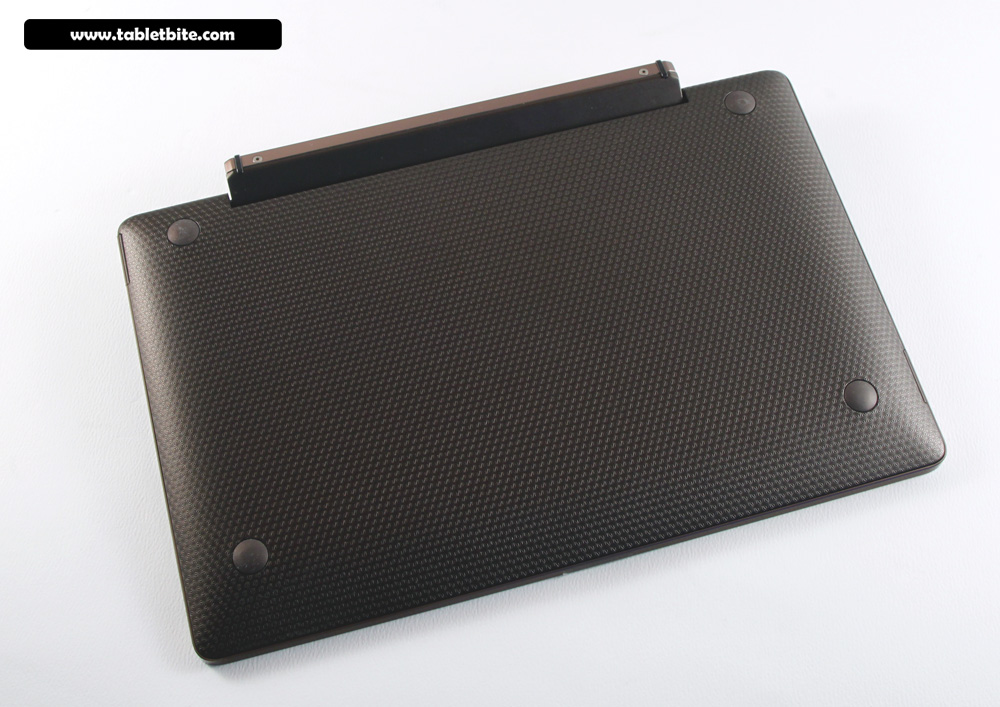
Bottom side of the docking station
Last but not least, there’s a 93% Full-size keyboard on this dock, pretty much the same as the one found on Asus 10 inch netbooks these days. Keys are properly spaced and there’s little noise and no flex at all when using them. Still, unlike the keyboards on netbooks, this comes with a slightly different layout, as some buttons have been configured to match with important Android features.
As for the trackpad underneath the keyboard, it’s decently sized and overall accurate, but did not support multi-touch gestures in our tests. Click button works OK as well.
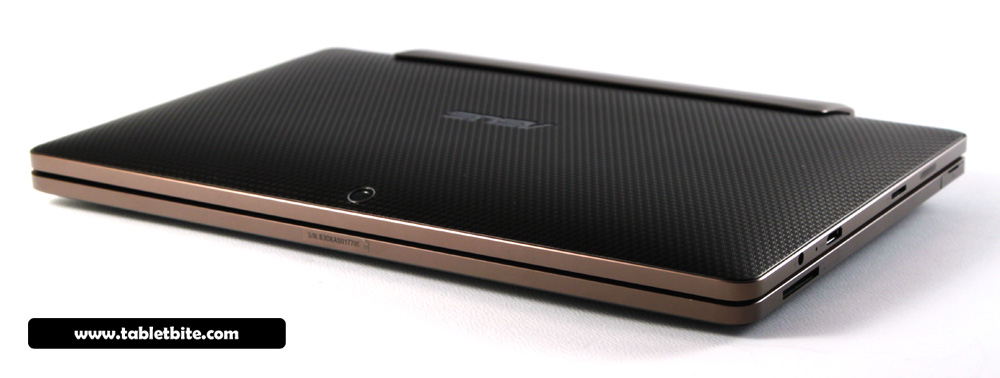
Combing the two…
Merging the tablet and the docking together you get a device that looks like a netbook and actually feels like an Android powered such device. Pretty much the same size and weight, plus pretty much the same functions. Also, the docking station can also work as a stand for the tablet and will prove useful when traveling and trying to watch a movie and need to adjust display viewing angles.
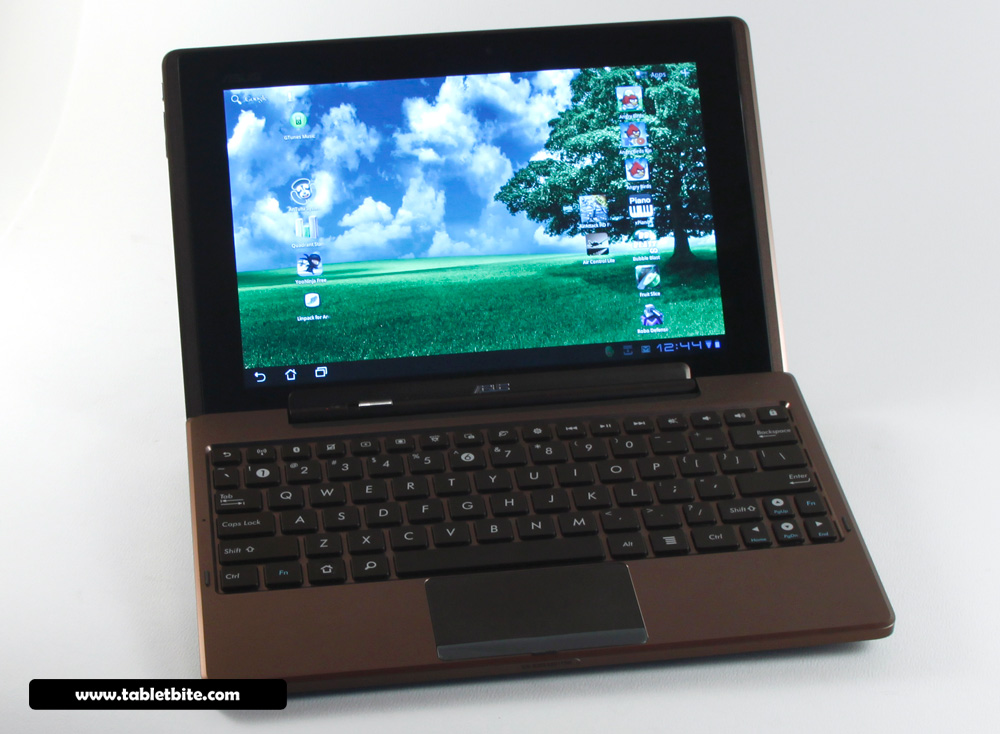
Tablet + docking = netbook. Sort of
Display
As we’re talking about a tablet, display should be one of its strongest assets. And that’s actually true here with the Transformer, which boosts a 10.1 inch display with good 1280 x 800 px resolution. Also, Asus used an IPS panel for this tablet, thus viewing angles are very good and colors and brightness levels as well.
On top of the screen you get a sheet of Gorilla glass, which in fact covers the entire front face and makes it scratch resistant. But also makes the device glossy, so using it outside could be a bummer. Still, that’s the case with all tablets these days so we can’t really consider this a con.
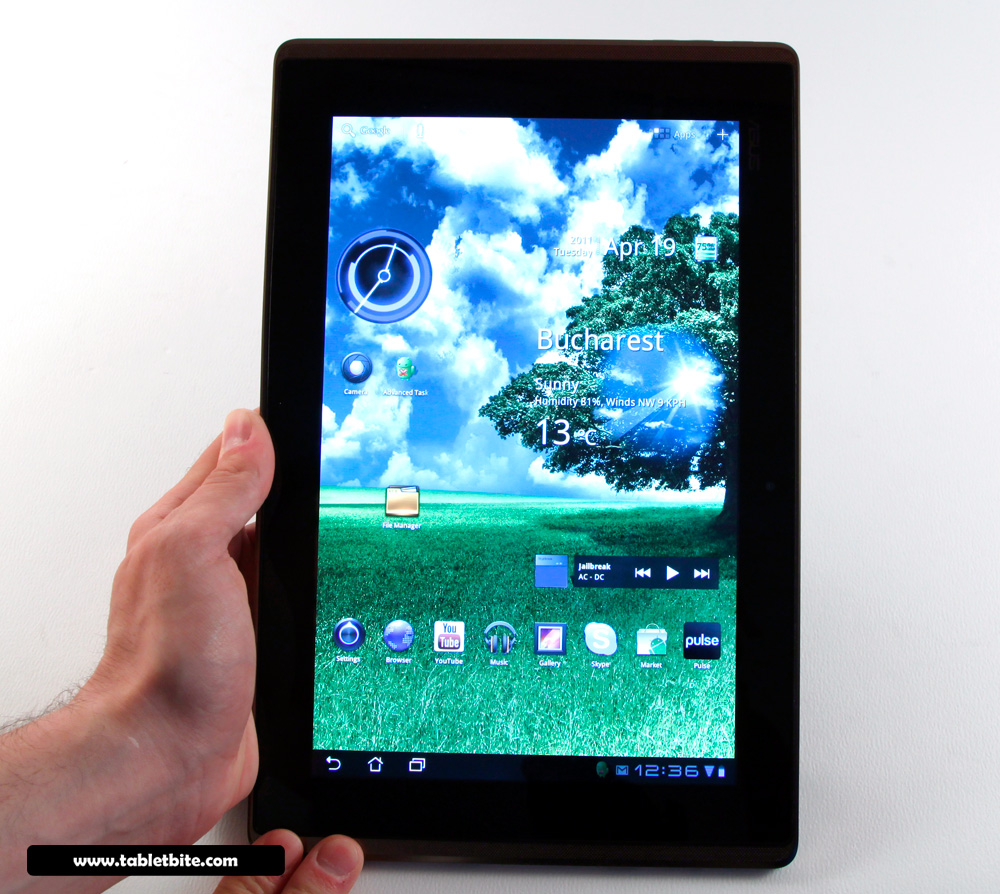
IPS high-resolution display – best you can find on a 10 inch tablet right now
Screen also comes with 10-point multitouch and you can see that demonstrated in the same clip above, with the help of a nice little App called MultiTouch Tester.
On top of the screen you get a front-facing camera and the light sensor that automatically adjust screen’s brightness according to the conditions around.
Hardware and performances
As you could see in the specs, there’s a Tegra 2 platform inside the EEE Pad Transformer and alongside fast storage and 1 GB of memory, this should make the Asus device quite a multimedia companion. At least in theory. Because in practice, things are a little bit different and that’s mainly Android’s fault, an OS still too young and unstable.
The tablet performs snappy after every restart, but using it for a couple of hours will make it sluggish even in basic tasks, like changing between menus and home-screens.
More details about hardware, performances and apps will be available in this clip below.
I was particularly surprised by the fact that this tablet could not play any types of HD content. I’ve tried 1080p .mkv, .mts and /mov files and none worked flawlessly. And neither did HQ Flash clips streamed from Youtube and I’m pretty sure this is also a software problem. Same that makes browsing sometimes sluggish, mostly when trying to use multi-gestures and especially when comparing response times with what you get on an iPad 2.
Also ran a couple of test and benchmarks on this tablet and you can find the results in the clip around the 22:30 minute mark.
Software and applications
And we’ve finally reached the most important part of this device: the software. What you get on the Asus EEE Pad Trasnformer is of course Android 3.0 HoneyComb OS, with a couple of customizations from Asus. There are some restyled widgets (for weather, location,emails), some specific apps (like the Asus Webstorage service) and a redesigned keyboard, which now includes numbers on top of the keys, unlike the standard HoneyComb keyboard layout.
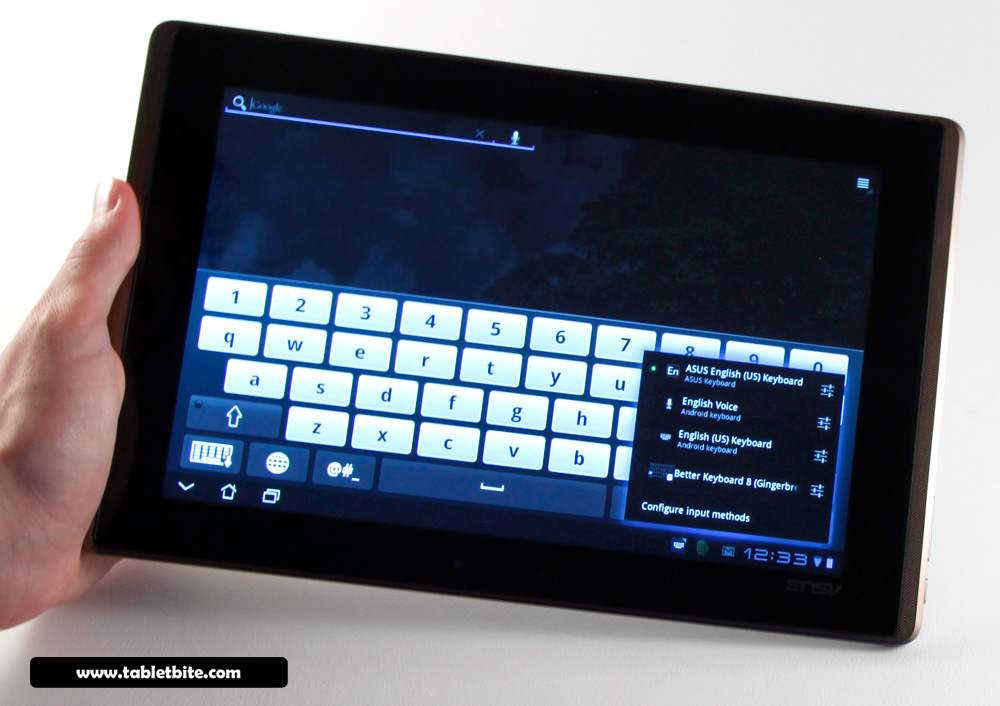
Asus customized keyboard
Besides these, Android 3.0 in pretty much standard on this tablet. And it comes with all its strong and poor aspects. First, you get the customizable home-screens and all the widgets and wallpapers you can put on those, plus the standard interface with buttons for back, home and currently running apps on the lower left side of the interface and the event indicators on the right, next to the clock and the battery meter.
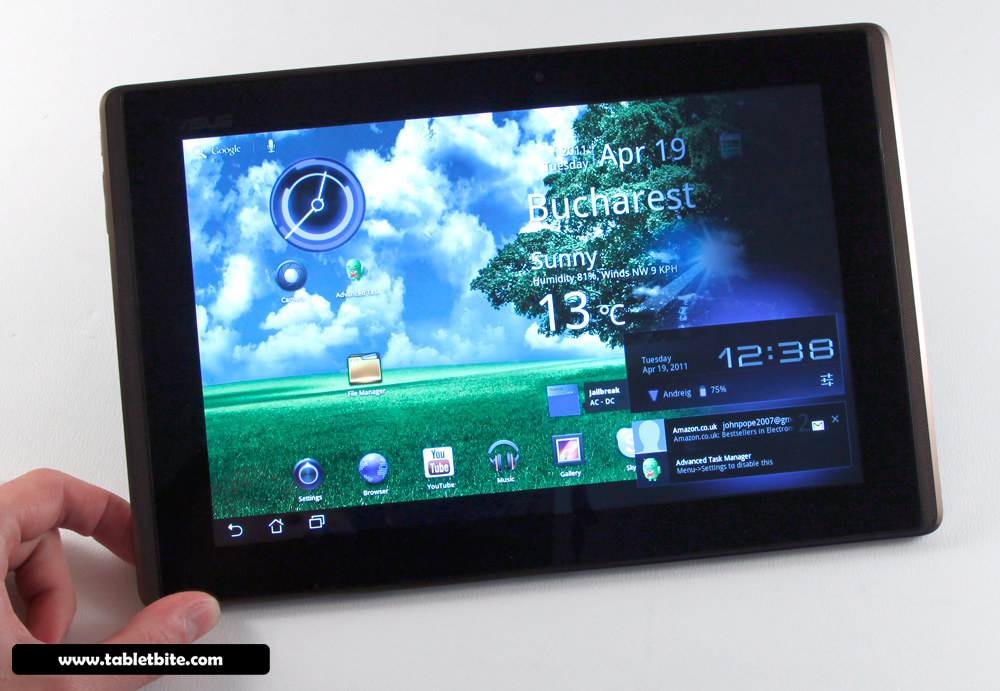
Standard HoneyComb interface with some Asus customizations
In terms of apps, you get all the standard ones like Youtube, Gmail, GMaps, Multimedia manager (with movies, photos, music). There’s also a very nice and easy to use File Manager system installed and Polaris Office, an app that easily allows you to create or edit Office documents, including Word, Excel and Powerpoint files. Plus the browser that supports tabs, bookmarking, Flash 10.2 and all such features, while actually loading sites quite fast.
There’s of course the Android Market, as the Transformer gets access to the official Google store and you can find here a bunch of apps for your device. Yes, there aren’t that many apps specially designed for HoneyComb devices (thus for big-screen Android tablets) but in time, they should be there. It’s frustrating for instance that you don’t get a proper Google reader app or a proper official Twitter app for HoneyComb, but these are just some of the problems you’ll have to stick with if planning to get an Android 3.0 gadget right now. Cause like I said, give it 6 months or so and the Market should get all the apps you would need and more. For the time being though…
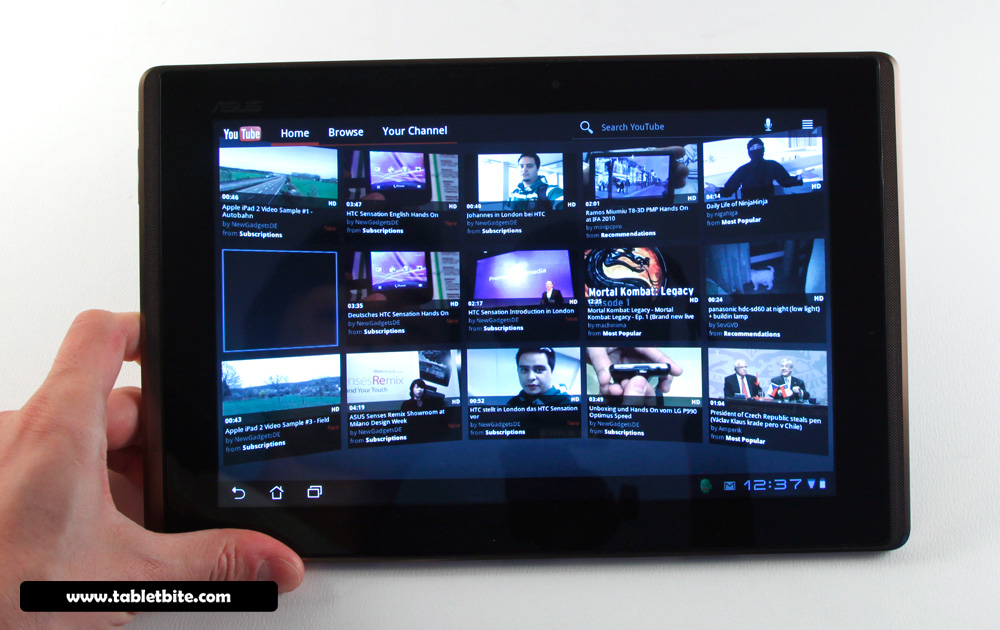
Youtube app
There’s more I could add but you’d better see the clip posted above for more details about software and performances.
Gaming
With the Tegra 2 platform inside, you would expect this tablet to boost some gaming abilities. And it does, but the problem is that you get a limited number of good games specially designed for Android 3.0 HoneyComb.
Nvidia has this special app called TegraZone where you should find games made for Tegra 2 devices, but you only get around 10 titles right now and I for one couldn’t actually install any of them on my particular Asus EEE Pad . Of course, most of this games will cost you from 3 to 10 dollars per title and the good news is that more titles should come in the next months.
For now though, we’ll have to stick with trying some of the older games. See the clip below for details.
More details on playing games on the EEE Pad Transformer in this other post from the site.
Camera
Like you saw in the specs, there are two cameras on this machine.
On the front you get a 1.3 MPx camera useful for video chatting and Skyping. While on the back there’s a 5 MPx camera without any kind of Flash. However, I do have to mention that this camera is excellently placed in the top-middle part of the tablet, thus making it difficult to cover with your fingers while holding the device (which is not the case for other tablets on the market).
Still, while optics on the 5 Mpx camera are decent, based on the still pics we shoot, trying to record a clip was a complete nightmare. Camera just freezes and we get a green screen in most cases; and when it actually works, the results are not a 720p fluent recording, but a sluggish clip with tons of jerkiness, artifacts and skipped frames. You can see what I mean by following the clip on top, that speaks about performances, around the 19.30 minute mark.
So definitely this is a software problem and I’m not the only one encountering it, based on some other reviews I spotted online for this tablet.
Battery life
There’s a 24.2Wh Li-Ion battery inside this tablet which is rated at 9.5 hours by Asus. During everyday use though you will hardly get anything above 6 hours though. Not sure what to say about stand-by time as I didn’t get to test that and also didn’t considered it such an important aspect.
Still, remember there’s also a battery inside the docking station which will charge the battery inside the EEE Pad when connected and both these batteries combines will take the Transformer to up to 16 hours of life (on paper), which translates to around 10-12 hours of use in everyday tasks. And that’s actually very good.
Pricing and availability
The EEE Pad Transformer is for now only available in the UK, where prices start at 379 pounds for the 16 GB version (or 429 pounds with the docking included). Still, for the time being Transformers in the UK are out of stock.
The rest of the world should see these tablets in stores by late May, early June. In the US prices are expected to start at $399 for the 16 GB slate and go up, with the docking adding a extra hundred to the final cost.
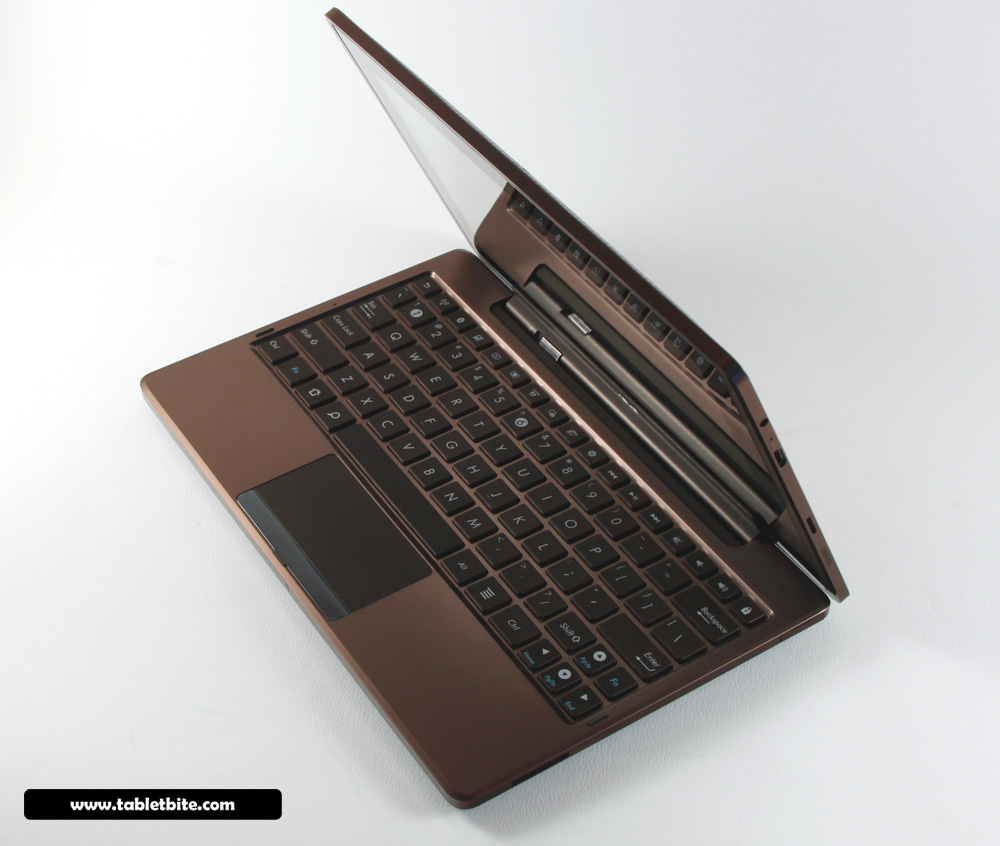
This is what you get for $499 in the US: tablet + docking
In the meantime this tablet is available in shops around the world. See the link bellow for more details.
You will notice though that at $399, the Transformer is actually 20% cheaper than the cheapest iPad, which is its main rival, and also at least 100 bucks cheaper than the Motorola Xoom. And this makes it a very interesting option for those in search of a good powerful tablet on a budget.
Final words and conclusions
All in all, there are lots of things we like about the Asus EEE Pad Transformer. It’s definitely a solid piece of technology and is well built, good looking and powerful. Comes with nice connectivity options, nice features and an amazing IPS high-resolution display, the best you can get on a tablet right now. We also find the pad quite comfortable to use for a longer time, because of its wider ergonomic body and rubbery finish on the back, that allows perfect grip. And we like the matching docking station as well.
But, and there is a big but here, I do not feel confident recommending the EEE Pad Transformer right now and that’s because of the Android 3.0 HoneyComb OS on it. Yes, this is still an early OS, but that’s not my concern, as a potential buyer. When looking for a tablet, I want the one that can provide me the best everyday experience. And that’s not really the case here, as the software does come with usually minor (but sometimes major) bugs and hiccups. It even freezes completely from time to time and requires restarting. And overall it doesn’t perform as you would expect from a powerful hardware like this, not in complex apps but not even during everyday tasks, when navigating through menus or changing between home screens.
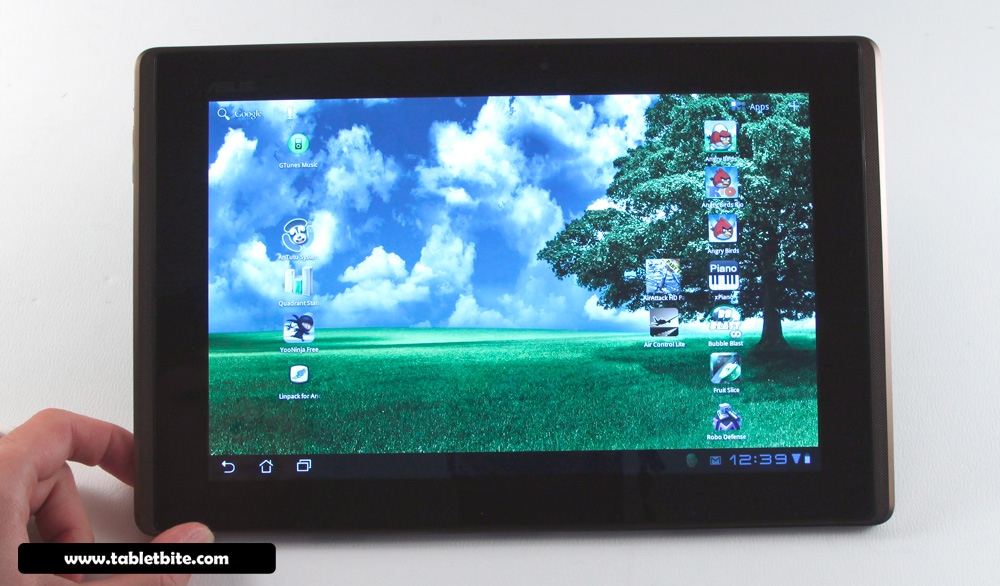
The Transformer has potential, but is just not the 10 inch tablet I would recommend right now
All these add up and make the Transformer pale in front of the iPad. And not just the Transformer, but other Android 3.0 tablets as well, like the Xoom for instance.
Still, the Asus EEE Pad Transformer is right now the best 10 inch Android tablet on the market, that’s no doubt about it, as the Asus device comes with a way better screen and pricing than its main rival, the Motorola Xoom. But it’s not the best tablet of all in this size range.
In time though, with Android becoming snappier and more reliable, our opinion might change. For now though, if you want a good tablet with the potential to become great, but which will for sure drive you crazy sometimes, that’s the Transformer. If you want the safe bet though, just go for the Apple iPad 2.

